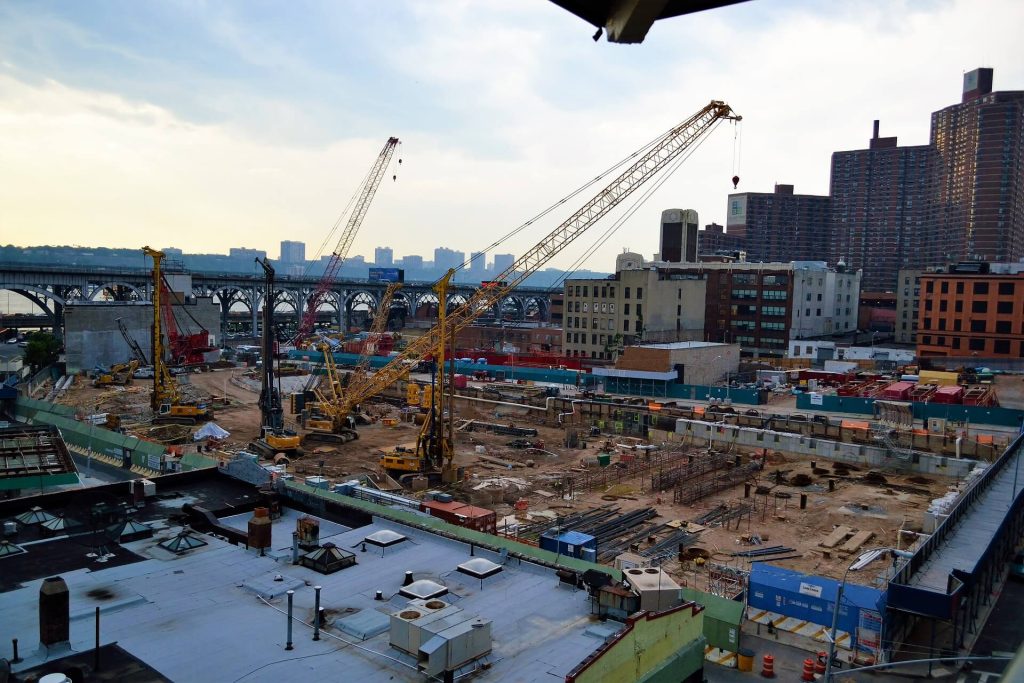Hello Construction Nation,
Here is some food for thought…. 65% of mega projects fail according to a 2015 study done by the Construction Industry Institute (CII). 70% of construction projects fail according to a 2020 mega project study by University College London (UCL).
I’ve seen and heard about how mega projects keep failing for decades. I recall that at the end of the forensic study on the building of the Denver Airport, the author concluded that mega projects are so complex that the ability to control the level of chaos makes them next to impossible to manage. But my experience has been the opposite. I’ve worked on many very successful mega projects. I just finished a $2 billion six-year airport terminal project, that was on time and on budget with no claims and has a smooth activation.
I developed the first version of the Mega Project Success Factors almost 20 years ago, and then we confirmed the success factors again with a group of Mega Project teams in the late 2000’s. Today the factors are still relevant and warrant sharing.
For the 2022 version, each factor was reviewed and, when appropriate, updated. We’ve also added a new success factor (success factor #12) because we have made huge strides in using technology and applications to help us design, plan, and build our projects.

Have you ever noticed that very large “Mega Projects” tend to create their own “weather.” There is so much opportunity for chaos to break out, like I mentioned before, that some experts believe it is not possible to control the inevitable chaos. This chaos has played out in many notable projects over the years. A few include the failure of the Denver International Airport project (mentioned above), the Hong Kong Airport project, the Boston Artery (Big Dig) project and now the San Francisco Bay Bridge project. These projects failed to come in on-time and within budget. Failures like these are of such high concern that the U.S. Congress passed new requirements for managing and overseeing mega projects (Congress defined a mega project as $1 billion or more, while others define it at $250 million and above).
You know how when you do something over and over patterns emerge? My team and I began to see patterns emerge after facilitating over 4,000 construction projects, including dozens of large and mega projects. We are always looking to see what makes a project, and in particular a mega project, succeed. We watched for those factors that were consistent on successful projects, and absent on projects that failed. Over time patterns emerged. That is how we developed the Mega Project Success Factors. Now, for our 2022 version, we have twelve success factors that have been identified.

These twelve Mega Project Success Factors evolved from our personal experiences and observations over many years and many projects. While these factors can’t cover all aspects for success, it is hoped that they open the door to understanding some of the key aspects required for success and the nature of mega projects. With such understanding we can begin to know why and how to approach mega projects differently.
Even though the success factors were developed from experiences on construction projects, it is believed that similar dynamics emerge within all types of large projects and mega projects.
The best way to use the Mega Project Success Factors is as an assessment and communication tool. Read them together and have each person assess where you are. Then compare what each one has identified as a project weakness. I’ve seen mega projects with just one severe weakness get sunk as that same weakness played out over the life of the project.

The Twelve Twelve Mega Project Success Factors for 2022
Rate your project on each Mega Project Success Factor:
1 = Very Strong, 2 = Strong, 3 = Satisfactory, 4 = Needs Improvement, 5 = Very Poor
1 Leader/Owner There is a person who is identified with the program/project as its leader. This person has full authority to do whatever they feel is necessary for success. The leader surrounds themselves with a group of the best of the best to help execute the project/program. The leader is stays for the duration of the project.
2 Mega Project Expert(s) There are people on the project with several successful mega projects under their belt. They are in a leadership role from the beginning to the end of the project/program. They use approaches that help the large team come together (like a Big Room) and know how to put together one shared set of project management applications, so you have one set of shared data and everyone is working from the same set of information.
3 Committed and Integrated Team Individuals are personally committed to the success of the project (a quality project, on-time and budget). The people are handpicked for their LEADERSHIP, experience/expertise and willingness to do whatever it takes. No one can tell who are consultants and who are employees.
4 Run by Project Managers (not politicians) When design and construction issues get politicized, practicality and common sense are not available to the team. The project needs a motto of “let the experts use their expertise.” The political issues should have been dealt with by the time of schematic design and should not be a part of construction. When issues do get politicized, it is the role of the Owner’s leader to protect the team from the dysfunction this brings.
5 Unique Structure and Culture (new norms, policies, procedures) Pulled out and away from the normal routines of their respective organizations, the project team members are free (empowered) to set new norms, policies and procedures that they feel are needed for success. The systems and mental attitude that can complete a $10 million project are not the same as those for a billion dollar one. The project/program structure should enable the team, not stifle its ability to be successful.
6 A Program Approach A program of projects is highly interrelated. It is not the same as one large stand-alone project and it cannot succeed by using the tools developed for managing a project. A new approach is necessary. This means there needs to be new systems, procedures and tools that allow you to manage a program of projects rather than managing project by project.
7 An Atmosphere of Partnership Everyone must work together toward the common end: a successful project. There cannot be any “CYA” or “us vs. them” – if there is you are likely to fail. Without an atmosphere of true partnership communication will be poor, resulting in team members and team leaders being unaware of project issues and problems until it is too late to solve them in a timely manner. This can work to sink the project. When people are pointing fingers, either to take the heat off themselves or to place blame, the focus is taken off of the project (and off of solving the problem) and placed on protecting interests. This will assure project failure.
8 Expect Chaos When NASA sends a rocket to Mars it is on target only about 5% of the time. The other 95% of the time it is making corrections to come back on target, gyroing back-and-forth. It is the team and team leaders who assure that the project stays focused on “Mars” (project success). First you must have the right people who can tell when the project is off course, and who are willing and able to tell you. Then, there must be a system in place that allows a “course correction” to get you back on target.
9 Provide Account-Ability Successful projects have a culture and systems for holding team members accountable for their commitments and pieces of the project. The heart of Account-Ability is a monthly independent feedback system.
10 Integrated Activation Team (facilities) A major facility project is not a turnkey operation. There have been several notable failures due to the staff’s inability to operate the new systems incorporated into the facility. An integrated activation effort must be started early in the construction phase to achieve buy-in and acceptance of those who will run and maintain the new facility.
11 Integrated Passive and Active IT (facilities) Successful projects incorporate information technology systems, both passive and active, from design through construction. Late incorporation of either passive and active IT can be devastating to a project’s schedule, particularly when IT specialists need to be supervised while accessing secure job sites.
12 Use Tools to Reduce Risks Virtual Design and Construction tools help teams to model in multi dimensions what is designed, planned, and built. This is a big effort upfront but will pay off as the team can see where the conflicts are and can see when things are not where they need to be. Tools developed by the Lean Construction Institute, including Pull Planning and Target Budgeting are incredibly helpful. Most contractors know about these tools. If not, now it the time to learn.
There you have it. The twelve Mega Project Success Factors for 2022. You can grab this assessment at sudyco.com/46. I hope you will share these with anyone working on a mega project. I’ve used it for several projects to make sure they were structured to succeed!
Be well Construction Nation!

P.S. Curious how you can improve your project’s chance at success?
- Listen to Sue on the Lead with Trust Podcast (Check out Episode 46, Mega Project Success Factors 2022).
- Take the Trusted Leader Assessment and find out your personal results.
- Tell your team to subscribe to the Lead with Trust newsletter so they stay cutting edge in the industry.
- Attend the September 19th International Partnering Institute’s Owner’s Lunch and Learn and get a scoop on LA METRO’s construction program.




